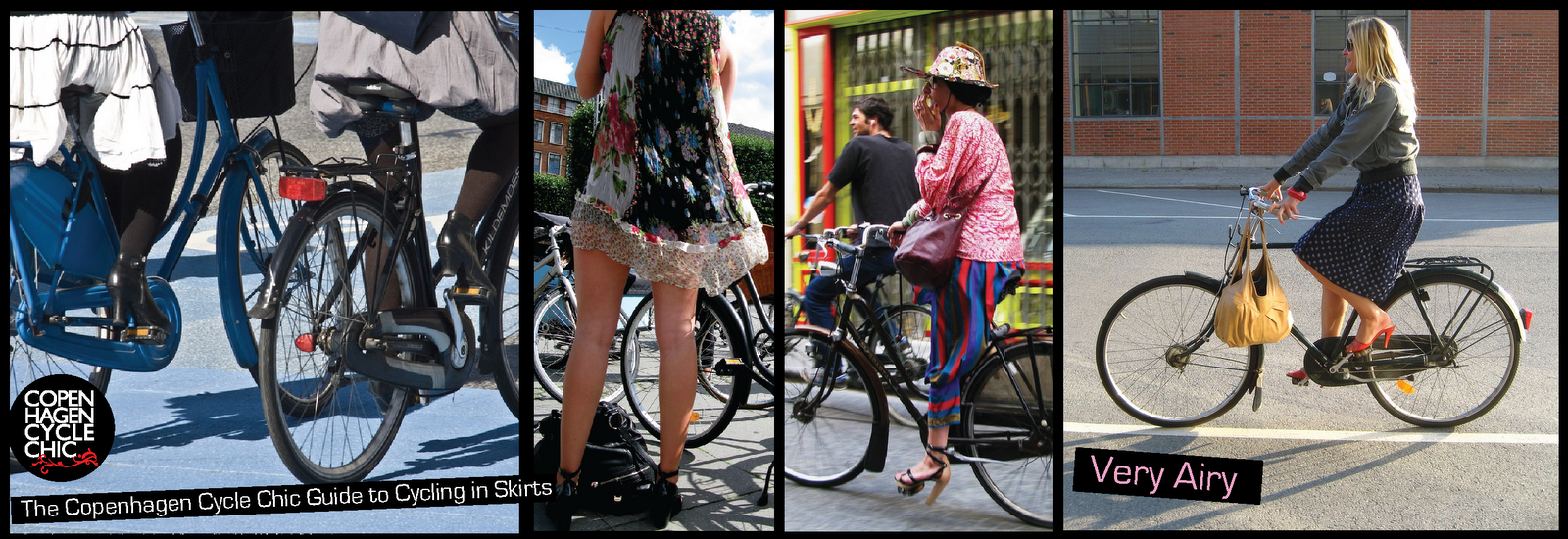Many barriers that people raise for not considering cycling as a transport option are in fact “false” barriers that often have simple solutions. Below we identify some typical false barriers and present possible solutions/suggestions and sources of inspiration to overcome them.
[project in progress]
1. Weather (rain, cold, heat)
Common reaction: “I don’t want to get wet/hot/sunburnt”.
Suggestion: Weather is easily overcome with the correct clothing and equipment. If one chooses to cycle only in favourable weather conditions, this alone reduces the need for a lot of motorized trips and provides the numerous benefits of cycling.
Inspiration: See some tips for cycle commuting in winter and for biking through the heat. See also how kids in Finland continue to ride bicycles to school in highly negative temperatures. The Winter Cycling Federation website shows how it is possible to cycle even in extreme weather conditions.
2. Hills
Common reaction: “My area/ city is too hilly”.
Suggestion: The improved health you achieve cycling overcomes any hill. Cycle at your own pace and make sure your bike is geared low enough so that even the most extreme hills can be climbed with relatively low effort. If your usual route has very steep hills, e-bike may be a good option. Some cities have apps that, based on topographic data, calculate the flattest route possible (eg. Horizontal Cities, available in Lisbon).
Inspiration: Quick Beginners Cycling Tips: How to Climb Hills; see also the summary of a conference focused on cycling in hilly cities, promoted by the Czech association Auto*Mat, with participants from Portugal, Austria and Switzerland.
3. Time
Common reaction: “I don’t have time to ride to work/ school/ university”.
Suggestion: Cycling can be quicker and more efficient than other modes of transport, especially for short trips.
Inspiration: An article published by the Portuguese association MUBi shows that the bicycle is twice as fast as the car.
4. Appearance/ Sweat
Common reaction: “My job requires me to wear a suit”; “I sweat too much”.
Suggestion: It is easy to cycle and look good, and wear dresses or suits; electric bicycles and multi-modal travel are also good options.
Inspiration: Look the website Copenhagen Cycle Chic.

5. Transport of cargo and/or children
Common reaction: “I have to carry equipment or children to work / school / shopping”.
Suggestion: Bicycles with the right equipment (such as trolleys or a trailers) can easily carry cargo and children.
Inspiration: Copenhagen Cargo Bikes. See also: Motherload – “A portrait of the cargo bike movement as a search for freedom and connection in a gas-powered, digital and divided world”; and a guide on biking for families.
6. Distance
Common reaction: “My workplace/ university is more than 20 km from my home”.
Suggestion: Long distances can easily be achieved by combining a bicycle trip with public transport or with an electric bicycle. If cycling to work is not an option at all, shopping or other journeys are still possible.
Inspiration: See the initiatives from the city of Vancouver for combining biking with public transport (bus, train & metro, SeaBus and Express train).
7. Pollution
Common reaction: “I don’t want to breathe traffic pollution”.
Suggestion: Cycling improves health and does not expose riders to additional air pollution (the level of pollution inside a car is always higher than the ambient air pollution level). Explore routes less exposed to traffic. On the other hand, if more people cycle, pollution will be lower for everyone.
Inspiration: a recent study published in the Journal of the American Heart Association shows that, though higher levels of pollution are linked to higher levels of heart attack, the risk is lower in people who are physically active. According to the research, moderate cycling for four or more hours a week cuts the risk of recurrent heart attack by 31 percent, regardless of air quality. That means even if people lived in a polluted area, cycling still gave their heart a boost. So, regardless of your city’s air quality, it’s always better to cycle than not cycle.
8. Others
Other barriers, specially those related to safety, are real barriers and require political commitment and investment in infrastructure and education to be overcome.
See the remaining resources available for more information.
References:
Arnold, T. (2017). Framework for Cycling Communications. Sidney: Australian Bicycle Council.
European Commission (1999). Cycling: the way ahead for towns and cities. Luxembourg: Office for Official Publications of the European Communities.
Johan de Hartog, J., Boogaard, H., Nijland, H., & Hoek, G. (2010). Do the health benefits of cycling outweigh the risks?. Environmental health perspectives, 118(8): 1109–1116. doi:10.1289/ehp.0901747.
Fernández-Heredia, A.; Monzón, A.; Jara-Díaz, S. (2014). Understanding cyclists’ perceptions, keys for a successful bicycle promotion. Transportation Research Part A: Policy and Practice, 63: 1-11. https://doi.org/10.1016/j.tra.2014.02.013.
